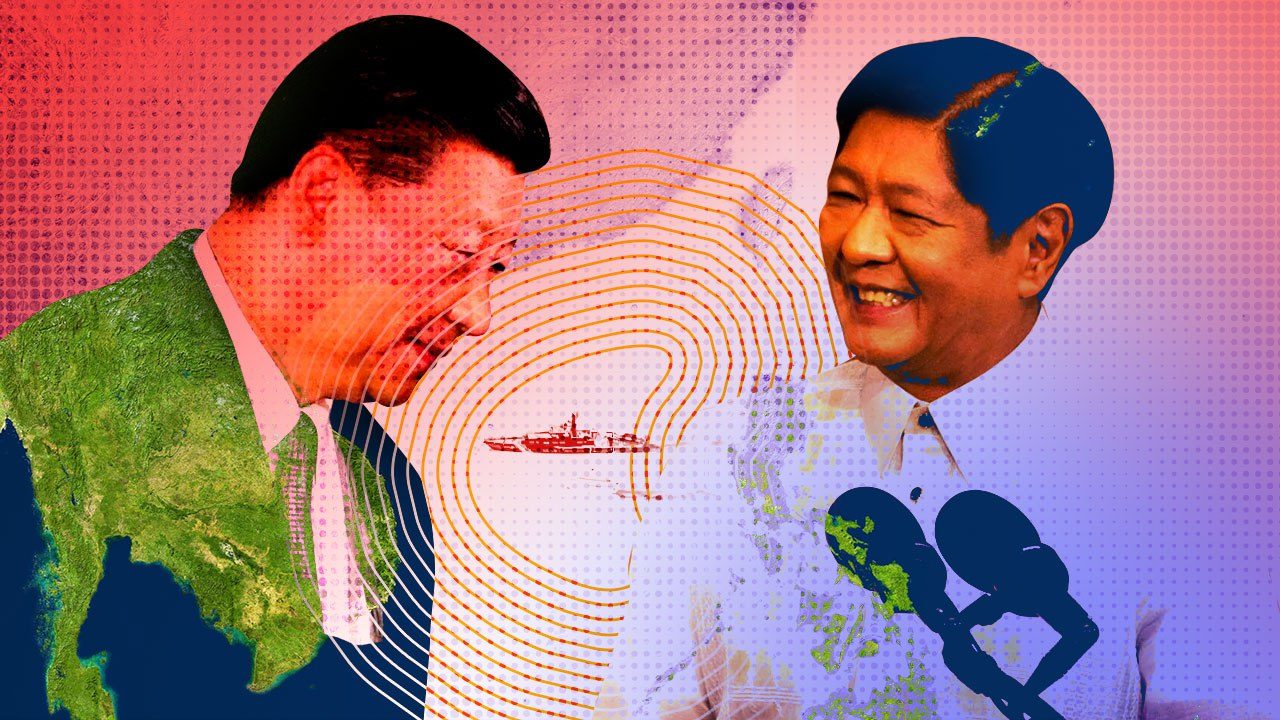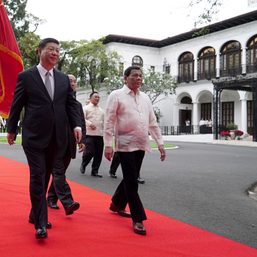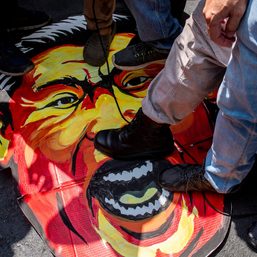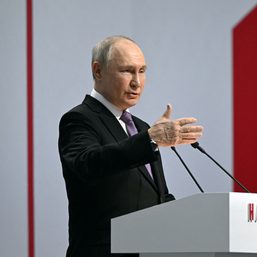SUMMARY
This is AI generated summarization, which may have errors. For context, always refer to the full article.

The President as diplomat
In a span of two days, President Ferdinand Marcos Jr. showed his range of diplomatic moves toward China. First, he made nice with President Xi Jinping. Then he revealed – perhaps prematurely and not accurately – plans to move away from a China-led Code of Conduct for the South China Sea.
Here’s how those days unfolded.
In the lead-up to the Asia-Pacific Economic Cooperation leaders’ gathering in San Francisco in November, he requested to meet with Xi on the sidelines of the summit. He would later say that he wanted to “get the view of the Chinese president on what we can do to bring down the temperature, to not escalate the situation in the West Philippine Sea…”
But even as Marcos was announcing this in a video message from San Francisco soon after his meeting with US Vice President Kamala Harris, the scheduled meeting remained iffy. It looked like frantic last-minute arrangements finally nailed down what turned out to be a brief pull-aside, an informal meeting between the two leaders on November 18, accompanied by Wang Yi and Enrique Manalo, the top diplomats of both countries.
Marcos had always said that it was imperative for China and the Philippines to continue to communicate to ease tension in the contentious waters. “We tried to come up with mechanisms to lower the tensions in the South China Sea,” Marcos told reporters after the pull-aside. “I asked that we go back to the situation where both Chinese and Filipino fishermen were fishing together in these waters.”
After the APEC meeting, Marcos made a stop in Hawaii in what looked like part of his journey of redemption. Thirty-seven years ago, the Marcoses arrived in Hawaii, his dictator father kicked out by a popular revolt. Last month, Marcos returned to the island as president, swept by the tide of fading memories.
Bilateral code of conduct?
But China was still on Marcos’ mind as he made a rare visit to the US Indo-Pacific Command, the US military’s biggest unified geographic combatant command, covering the vast South China Sea.
Two days after his feel-good meeting with Xi, showing him to be reaching out to the giant power, Marcos revealed information that surprised many and earned China’s displeasure. At the Asia Pacific Center for Security Studies (APCSS) in Hawaii, an institute of the US Department of Defense, he said that the Philippines was negotiating with Vietnam and Malaysia to arrive at bilateral codes of conduct for the South China Sea. This is because the ASEAN-China Code of Conduct (COC), which seeks to regulate maritime activities in the South China Sea, has been as slow as molasses. It has been in the works for 21 years.
(Ian Storey of the Institute of Southeast Asian Studies, who has been tracking the forever saga of the COC negotiations, likened these to watching the movie Groundhog Day where events kept repeating themselves.)
At the APCSS forum, Marcos was effusive and at ease, answering questions lengthily. I have since learned from diplomatic sources that the talks with Vietnam were not focused on a COC but were broader, aimed at reaching an agreement on maritime security cooperation. As Marcos told the outgoing Vietnamese Ambassador Hoang Huy Chung in August: “Now that we are going to start discussions on the agreement that we have between the Philippines and Vietnam, I think it…will be a very, very important part of our relationship and it will bring an element of stability to the problems that we are seeing now in the South China Sea.”
As for Malaysia, no such talks were taking place.
It turns out that the President misspoke.
Later, when asked about the bilateral COCs with Vietnam and Malaysia, Ambassador Babe Romualdez clarified in a TV interview that Marcos “probably meant a joint agreement of some sort” but did not elaborate.
Still, negotiating a bilateral COC with each claimant country is a welcome idea to settle maritime disputes with them.
‘Let’s try everything!’
I am trying to understand where Marcos is coming from. Did he conflate the ideas and plans in the various briefings he has received?
It became clear to me that the core of his thinking on diplomacy was to try a range of actions all at the same time to achieve peace. He said in the APCSS forum: “I am a great believer in trying everything all the time simply because you can’t predict by any stretch of the imagination where you will succeed. My best example is: who would have thought the diplomatic relations between the US and China would come about because of table tennis? And it did…. Let’s try everything!”
Marcos seems nostalgic for the days of ping-pong diplomacy, when sports could thaw relations between countries and in fact even became a historic moment leading to the end of the Cold War. The world, however, was much simpler then.
Let me know what you think. Email me at marites.vitug@rappler.com. – Rappler.com
Add a comment
How does this make you feel?








![[Just Saying] SONA 2024: Some disturbing points](https://www.rappler.com/tachyon/2024/07/TL-marcos-sona-points-july-23-2024.jpg?resize=257%2C257&crop=335px%2C0px%2C720px%2C720px)





![[Vantage Point] China’s silent invasion of the Philippines](https://www.rappler.com/tachyon/2024/07/TL-china-silent-invasion-july-16-2024.jpg?resize=257%2C257&crop=318px%2C0px%2C720px%2C720px)




There are no comments yet. Add your comment to start the conversation.